The Northern Weekly Salvo no. 291
Incorporating Slaithwaite Review of Books, Weekly Notices, Sectional Appendices, Tunnel Gazers’ Gazette and Northern Umbrella. Descendant of Teddy Ashton’s Northern Weekly and Th’Bowtun Loominary.
Published at 109 Harpers Lane Bolton BL1 6HU email: paul.salveson@myphone.coop
Publications website: www.lancashireloominary.co.uk
No. 291 February 13th 2021
Salveson’s half-nakedly political digest of railwayness, tripe and secessionist nonsense from Up North. Sometimes weekly, usually not; definitely Northern. Read by the highest and lowest officers of state, Whitmanites, weirdos, misfits, steam punks, yes women, no men, gay Swedenborgians, cat-spotters, discerning sybarites, bi-guys, non-aligned social democrats, pie-eaters, tripe dressers, nail artists, self-managing VIMTO drinkers, truculent Northerners, grumpy Norwegians, absurd Marxists, sleepy Hungarians, members of the clergy and the toiling masses, generally. All views expressed are my own and usually nobody else’s. Official journal of the Station Cat Improvement Network, Pacer Dining Club, Station Buffet Acceleration Council and the Campaign for a North with a capital ‘N’.
“We are far more united and have far more in common with each other than things that divide us.” – Jo Cox, maiden speech in House of Commons, June 3rd 2015
General gossips
A bit of a gap since the last Salvo but not been short of things to do it – it’s just that I can’t remember what they are. Perhaps an age thing (and I’ve had my jab, hooray!). The best thing has been the number of
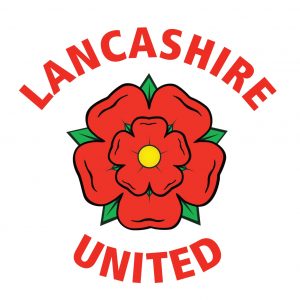
really interesting local walks, in areas that I’d never really explored. Politics is interesting, with sections of the London-based Left discovering their inner ‘Englishness’. The notion is discussed further in this Salvo and readers’ views are welcome.
There seems to be a lot of consultation-itis going on in the transport world, with Grater Manchester Combined Authority having just completed its soundings on the future of the buses. The Department for Transport has started one, asking for views on the rail network to the north of Manchester.
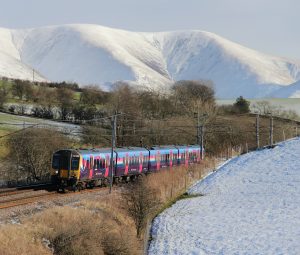
The trouble is nobody really knows how people will travel in the next few years. One thing that I’m sure of, whatever it is it won’t be like what we’ve been used to before. There’s a real risk that the decline in public transport usage will be long-term. It will need a lot of determination to convince people that train and bus are safe ways to travel. But even if that argument is won, people are unlikely to want to go back to five-days-a-week commuting, or for those annoyingly frequent ‘business meetings’ in the capital. What are the implications for HS2? Pretty obvious I’d say.
Another England is possible
The quest for a ‘progressive English politics’ has become a growing trend recently amongst sections of the English Left. Recent articles in The Guardian and Observer suggest that ‘re-capturing’ English identity from the Right could be key to Labour re-building its popularity in a post-Brexit world. Writing in The Guardian recently Andy Beckett suggests that the nature of Englishness matters – “not least because a

less prickly and entitled version would be better for our neighbours. And it might even stop a lot of the English from feeling like foreigners in their own land.” Do we? I don’t think so, and there’s a risk of descending into something quite nasty if we’re not careful (“I didn’t see a single white face…”)
He isn’t saying that and there’s much to agree with in Andy’s arguments, which recognises that the nature of England has changed dramatically in the last few decades and our relationship with a potentially independent Scotland needs to be carefully defined so that a vindictive and reactionary nationalism doesn’t take hold in England. In a subsequent piece in The Observer Julian Coman is more specific about how a progressive Englishness could be articulated. Illustrated by a photo of ‘quintessential England’ – a rural English church with the flag of St George flying next to it – Julian takes us on an ‘English Journey’ which culminates in the idea of an English Parliament which would sit, comfortably we must assume, with devolved or independent governments for Scotland and Wales.
I have my doubts. In a paper posted on the Hannah Mitchell Foundation website (www.hannah-mitchell.org.uk) I argue that the quest for a ‘progressive English’ politics that doesn’t recognise the nation’s regional diversity is a dead-end. It makes the case for an ‘England of the Regions’ with a new democratic settlement founded on regional assemblies elected by PR. It makes the case for developing new, progressive policy networks (‘ideas mills’) which may be
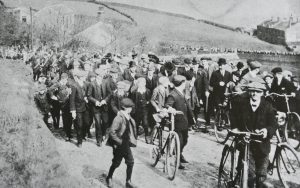
regionally-based – but which talk to each other and similar fora in Scotland, Wales and Ireland. These networks must have deep roots in their communities, reflecting regional distinctiveness. Keir Starmer’s apparent tilt towards ‘patriotism’ is unlikely to win support in the North but could well lose members across the UK. There are precedents here. The socialist movement has gone down the ‘patriotic’ road before, personified by Robert Blatchford (‘Britain for the British’) in the run-up to the First World War. It split the ILP and Clarion movement and Blatchford became a cheer leader for militarism. There is an alternative, based around progressive regionalism which embraces the strong radical traditions in different parts of the country. Building on those traditions and fashioning distinctive but collaborative regional political cultures is an exciting task. Maybe time for a second edition of Socialism with a Northern Accent!
Regional democracy and Electoral Reform go hand-in-glove
Jenny Cronin and Ying Ho of the Hannah Mitchell Foundation have written an excellent piece arguing the case for electoral reform alongside regional democracy. They make the point that “The voting systems in the devolved nations are leading the way to a more representative democracy. There are pros and cons to each electoral system, and the system to be adopted in devolved regions is certainly open to debate. One thing is clear – it is about time for the UK to ditch the FPTP system for the General Elections and to replace it with proportional representation. And on the journey to regional democracy, proportional representation must be a companion of the campaign, in order to establish fairer and inclusive regions.” You can read it in full here: http://hannah-mitchell.org.uk/
The Lancashire invasion of Russia
This is a little-known episode of world history, but it did happen, in a way. In 1842 the British Government relaxed its ban on the export of textile machinery (bet you didn’t know that?). That led to a major surge in exports of Lancashire-made machinery, as well as the human expertise to install and run it. The main export market was Russia. The country was starting to industrialise, particularly in the more westerly
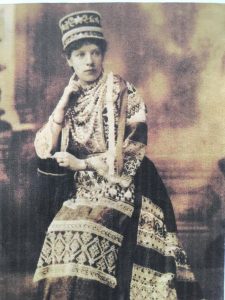
parts. Towns like Ivanovo, near Moscow, grew rapidly – becoming known as ‘The Manchester of Russia’. The highly talented Mr Knoop – Ludwig to his friends – acted as an intermediary between the Russians and Lancashire firms such as Mather and Platt’s of Oldham, Howard and Bulloughs of Accrington and Tweedale and Smalley’s of Rochdale. Bolton played a very important role in supplying stationary engines to power the mills. The key firms were Hick Hargreaves, John Musgrave and Sons and Dobson and Barlow. Dozens of skilled Lancashire men went out to Russia, earning very good money.
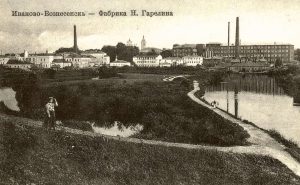
In some cases they met and married Russian women, in many other instances the entire family came out and settled for many years in the country, creating their own clubs and sporting teams. Russian football owes its origins to Chorley-born Harry Charnock who ran a mill in
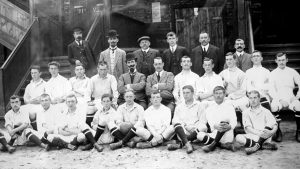
Moscow and started a football team, initially for ex-pats. It quickly grew and Russian lads took to the game. Harry became vice-president of Moscow Football League and the game became well and truly established.
The ‘people’ aspect of the story has been relatively little explored, though there’s quite a lot written about the machinery (no change there of course). Pamela Smith has done some important work and is developing her research around the Boardman family from Rochdale (see www.drawnground.co.uk). Somewhere in Moscow there is still a ‘Rochdale Street’! Bolton people played an equally important role and some details are starting to emerge, which I covered in more detail in The Bolton News last Wednesday (should be available on line soon).
One fascinating story is that of the Cromptons of Bolton. Robert Crompton was born in Bolton in the 1840s and became an apprentice in one of the Bolton mills. He rose to the ranks of overseer and 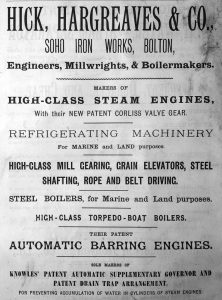 qualified as an engineer. In the 1850s He was asked by his firm to travel to Kiev to help establish a mill that had installed machinery that he was familiar with. It was clearly seen as an extended job and he made the difficult journey to Russia with his young wife Ann. His great grand-daughter Dorothy says that “he worked at the mill, creating a strong friendship with the mill owner and was respected by the workers.”
qualified as an engineer. In the 1850s He was asked by his firm to travel to Kiev to help establish a mill that had installed machinery that he was familiar with. It was clearly seen as an extended job and he made the difficult journey to Russia with his young wife Ann. His great grand-daughter Dorothy says that “he worked at the mill, creating a strong friendship with the mill owner and was respected by the workers.”
The Cromptons had four children, all born in Russia. Two died young and were buried in Odessa. The third, Mary Alice Crompton, was brought up in Kiev and could only speak Russian until the age of 5, when the family returned to Bolton in the 1870s. There were concerns for the family’s safety owing to growing political and industrial unrest in the country. The family moved into a house in Bolton but their return was short-lived. The mill owner in Russia asked Robert Crompton to come back to help him at the mill – being a good friend, he did. However, he quickly succumbed to illness and died soon after his return. He is buried with his two children in Odessa. There is a
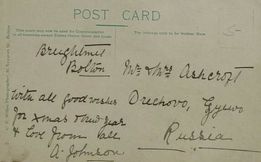
tangible relic of the family’s time in Russia. Nora, great-grand-daughter of Robert, brought back a Russian samovar which is now in Bolton Museum. Over the last few days I’ve been contacted by several people whose ancestors worked in Russia and still have things like Russian phrase books amongst their family heirlooms!
There’s a very rich seam of social history waiting to be dug. What happened after 1917? We know that many English ex-pats left the country as revolution and civil war set in. I suspect some stayed on, but that’s a guess. Maybe a trip to Russia when it’s possible.
Coal, Iron and Mud: exploring the Wigan Coalfield
The area to the north-east of Wigan, covering Hindley, Aspull and Haigh, was once a highly industrialised area, centred around the Wigan Coal and Iron Co.’s activities at Kirkless. You wouldn’t get that impression today, though there are some remains of the Coal and Iron Co.’s workshops at Kirklees itself, adjacent to the Leeds-Liverpool Canal. Of the dozens of collieries that once pock-marked the area, virtually nothing remains. There are some slag heaps, including the
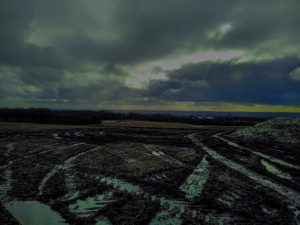
enormous Woodshaw Tip, which has been well-landscaped by Wigan Council. What does remain, for the trained eye to detect, is a large network of colliery lines which once served the pits and foundries. Most are public rights of way and tracing them makes for a fascinating day out.
Poised over the landscape, with a stunning view beyond Wigan to West Lancashire, is Haigh Hall, seat of the Earls of Crawford and Balcarres, who made a fortune from the coal deposits on their estate. Today, the hall itself is empty after the last tenants fell out with Wigan Council and were told to leave. Nearby however there’s a visitor centre and range of shops and cafes, open for takeaway.
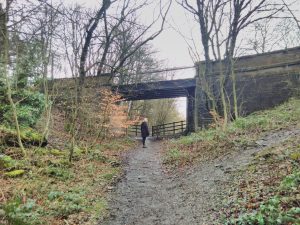
The estate has its own 15” railway and also some smaller gauge railways on site. I’m hoping that before long they’ll be back running – it usually re-starts at Easter, so fingers crossed.
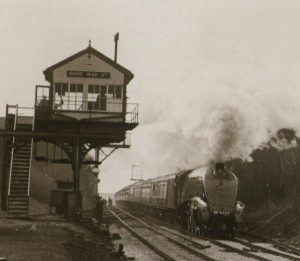
Below the hall, to the west, is the canal and then further west the trackbed of the old ‘Whelley Line’ which by-passed the congested railway around Wigan. The line diverged from the West Coast Main Line at Bamfurlong and rejoined it at Standish, with several lines feeding in and out. Although primarily a freight line, it was used for excursion traffic including the Westhoughton to Blackpool ‘Labour Club Special’ on June 3rd 1967, on which I travelled (in the second-best seat – the fireman’s – Malc was too busy shovelling coal). It was routed from Westhoughton via Hindley, De Trafford Junction and onto the Whelley Line through Haigh Hall grounds and onto ‘the main line’ at Standish Junction for a fast run into Preston and on to Blackpool. 28 minutes early on arrival. Thank you, Driver Bert Welsby and Fireman Malc Frost for a


memorable day out. Walking parts of the line (some of which is a footpath and cycleway, other parts just derelict) was a slightly spooky experience. The area around Kirklees and Aspull also has a strange feel to it with industrial remains and bits of old railway popping up in woodland. Not a manicured ‘country park’ at all, and long may it remain so. Worth exploring, but bring your wellies – it’s very muddy.
Haigh Foundry: one of the world’s earliest locomotive factories
Within the area around Haigh Hall are the remarkable remains of one of the world’s earliest locomotive factories – Haigh Foundry. Before a walk on Wednesday I’d never been there and it’s well off the beaten track at the spot called ‘Leyland’s Mill’ on maps. The remains of the foundry are spread out along the banks of the Rover Douglas, either side of a very impressive stone bridge which carried the road to Haigh
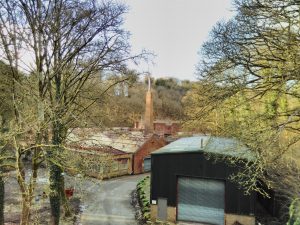
Hall over the railway. The date stone on the bridge says 1846 and the entrance to it below is blocked off. The south side of the bridge has several activities going on including a modern-day ‘Haigh Foundry’. On the north side, which looks like it was the largest part of the complex, everything is shutdown with most buildings lying derelict. Access to the plant was difficult. Teams of horses were used to haul wagons carrying locomotives up the steep hill out of the valley for transport by rail from goods yards in Wigan. One beam engine, built in 1848, required no less than 48 horses to shift it!
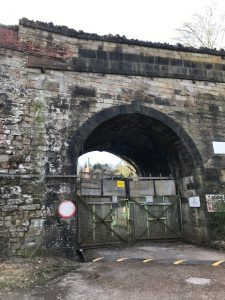
The railway that served the foundry from 1860 was owned by the Earls of Balcarres and originally ran from Aspull, over the canal and to the Lindsay and Alexandra pits before veering north along the Douglas to reach the foundry and Brock Mill Forge. In more recent times (from 1869!) the main railway access was by a private branch which ran northwards and joined the Lancashire Union Railway at Haigh Junction. Some traces of it are visible beyond Brock Mill Forge, which is now a private housing estate.
The history of the foundry is outlined in The Industrial Railways of the Wigan Coalfield by Messrs. Townley, Smith and Peden. The original ironworks was established in 1788 though Brock Mill Forge, about a mile away, was already functioning from 1776. Robert Daglish was appointed chief engineer in 1804 and the business seems to have concentrated on locomotive building for several years. The first locomotives to be used in Lancashire were built here in 1812 for use on colliery railways around Orrell and Winstanley. Between 1835 and 1856 the Haigh Foundry built over 100 locomotives, mostly for main-line companies. These were listed in an article by C.E. Stretton in The Preston Herald of August 22nd 1903 which makes for fascinating (though apparently slightly unreliable) reading. The first recorded locomotives to be built were a couple of 0-4-0s for the firm of Bury in
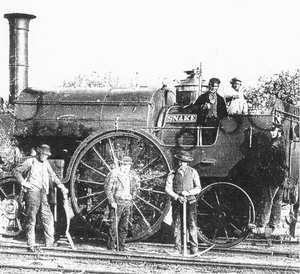
Liverpool. Early in 1836 they supplied three 2-2-2 express locomotives for the Liverpool and Manchester Railway, named Vesuvius, Lightning and Cyclops. The foundry supplied motive power to the London and Birmingham, Great Western (broad gauge), North Union, Manchester and Bolton and many other early railway companies. They did some work abroad, supplying a pair of 2-2-2s to the Paris and St Germain Railway and several Crampton 4-2-0s for use in France. They acted as sub-contractors to several larger companies including Bury and Co., Rennie, Gooch and Evans and Jones and Potts. One of their last contracts was supplying three locomotives for the War Department in The Crimea, in 1856.
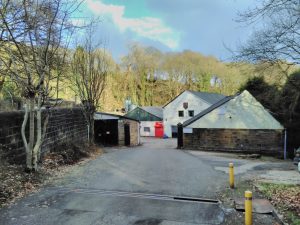
The foundry went through various changes of ownership and locomotive building ended in 1856, with the Foundry concentrating on mining machinery. The works closed in 1908 and the site became split between several different businesses, which remains pretty much the case today, on the south side of the bridge. Access is still via the original entrance with the fine cast iron columns forming the gateway.
Bringing coals from Yorkshire: this month’s short story
I’ve been working on another novel, called The Red Bicycle, set in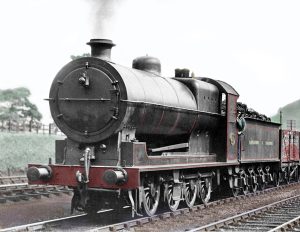 Lancashire and Yorkshire in the years before the First World War. I got a bit bogged down with it, but did manage to write a chapter which is more or less a standalone piece. I’ve edited the tale a bit more and put it on the website – with thanks to Noel Coates for some historical connections and to other friends for usefuil feedback. It’s the story of one day in the life of a Bolton loco fireman….
Lancashire and Yorkshire in the years before the First World War. I got a bit bogged down with it, but did manage to write a chapter which is more or less a standalone piece. I’ve edited the tale a bit more and put it on the website – with thanks to Noel Coates for some historical connections and to other friends for usefuil feedback. It’s the story of one day in the life of a Bolton loco fireman….
It’s here: http://lancashireloominary.co.uk/index.html/this-months-short-story
The Salvo Shop: illuminating books from The Lancashire Loominary
The main sales items at the moment are my book celebrating the West Pennine Moors – Moorlands, Memories and Reflections and a sudden rush of interest in my novel (set in Horwich Loco Works) The Works. This could be related to the special offer of £6 while stocks last. The 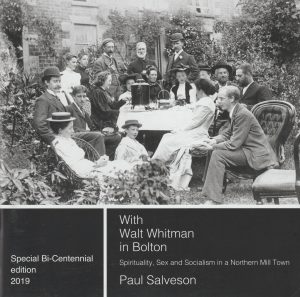 ‘Bolton – Lancashire’ face mask is virtually sold out and has raised about £500 for local charities. I’m also doing a half-price offer on With Walt Whitman in Bolton, for £5.
‘Bolton – Lancashire’ face mask is virtually sold out and has raised about £500 for local charities. I’m also doing a half-price offer on With Walt Whitman in Bolton, for £5.
I’m in the process of putting a couple of books onto kindle (well, Simon is on my behalf, far too complicated for me). The life and work of Allen Clarke/Teddy Ashton – Lancashire’s Romantic Radical – should be going on the kindle list, as well as With Walt Whitman in 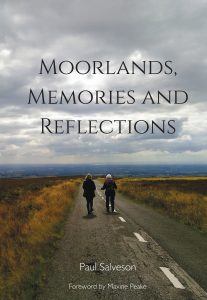 Bolton – which may help sales in America.
Bolton – which may help sales in America.
Full details of all publications are on my website here (or see summary below): www.lancashireloominary.co.uk or email me for details at info@lancashireloominary.co.uk
New: Second-Hand Department
I’ve been using a bit of lockdown time to sort out my book collection. It was a mess with a lot of good stuff duplicated or even triplicated. So I’ve done a stock take of all the surplus books and opened up the Lancashire Loominary Secondhand Bookshop. There’s some quite good stuff there – you can view it at http://lancashireloominary.co.uk/index.html/second-hand-books . I would point out the most interesting stuff, to railway aficionados, is the 26 bound volumes of Railway Magazine, which stretch back to 1899. So if you’re looking for an odd volume to complete your collection, you may just be lucky. I’m nearly there, looking for volumes 20, 31, 34, 37 and 41. Let me know if you’re interested in a swop.
My new photo gallery – an emphasis on steam (but not completely)
I’ve been making some changes to my website/s…I’m keeping www.lancashireloominary.co.uk for all publications, including The Salvo. However, www.paulsalveson.org.uk has been re-born as Paul Salveson Photography: places, trains and factories or summat like that. There are several pages dealing with different aspects of my photography: BR Steam, Continental Steam, The Modern Railway, Industrial Steam, Northern Rural Landscapes, Mills and Mines, and Strikes, Riots and Demonstrations. This is my current favourite: Industrial Railways UK 1966 – 1980 – Paul Salveson Photography
Good places to buy my books and other things
A great feature of any walk up Rivington Pike is the Pike Snack Shack on George’s Lane – a long way up, the last place before you get on the track to the summit. They do coffee, pies, sandwiches ansd cakes for takeaway and you can sit amidst the heather and savour the view across the West Lancashire Plain. You can also buy copies of Moorlands,
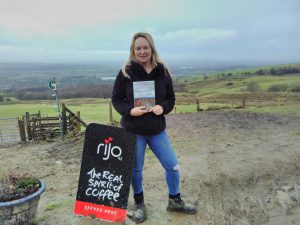
Memories and Reflections. Another popular addition to my list of retail outlets is Bunbury’s real ale shop at 397 Chorley Old Road, Bolton. The bar side of the business is currently shut but they are open for takeaway. I can recommend their oatmeal stout and some superb German lager. Another slightly unconventional outlet is A Small Good Thing, on Church Road. This is a great little shop mainly selling organic fruit and veg and a range of ‘small good things’. Fletcher’s Newsagents on Markland Hill Bolton are stockists. Justicia Fair Trade Shop on Knowsley Street, Bolton, is handy for the town centre and has a full set of my books available (and some great gifts from around the world). Further afield the Pendle Heritage Centre at Barrowford has a supply; so has George Kelsall’s bookshop in Littleborough and The Carnforth Bookshop, a short walk from the station.
Winter Hill 125 wins more support
Plans to celebrate the 125th anniversary of the 1896 Winter Hill ‘mass trespass’ continue to evolve with strong interest from The Woodland Trust, local unions, The Ramblers and many more groups and individuals. The celebration will take place on Sunday September 5th 2021 – get it in your diary now! My book on the mass trespass is available price £5 (plus postage if not local) – see below. It is hoped to have some major events this year, circumstances permitting. More details to follow. The best way of keeping updated is to join the Winter Hill 125 facebook page.
On Friday March 12th there’s an open meeting with Guy Shrubsole, Nick Hayes and myself (so far, we’re hoping to make it a bit less of a line up of blokes). If you’re interested in joining email chris_chilton@hotmail.com and he will send you a zoom invitation.
Small Salvoes
Talking to North Korea by Glyn Ford
Glyn Ford was a North-West Labour MEP many years ago and an early advocate of regional devolution (in the days of ‘Campaign for The North’). He has become a ‘North Korea expert’, perhaps inspired by his experiences of Tameside Labour Group (sorry, a cheap joke but couldn’t resist it). His new book, published by Pluto Press, is a highly intelligent account of North Korea’s history and contemporary state. He doesn’t dismiss the country as a Stalinist hell-hole, but isn’t an uncritical admirer either. It’s remarkably well-balanced and deserves to be widely read. Available price £14.99
The Railway Navvies of Settle: the end of the line by Sarah Lister
The story of the men who built the Settle-Carlisle railway has been told before but the real history has often given way to sensationalised accounts of drunkenness and fighting, almost making navvies victims of their own fate. Sarah Lister has written a much more balanced account. Instead of anonymised accounts Sarah tells many individual stories of families, where they came from and what became of them, their wives and families. An excellent and well-illustrated piece of work, illustrated by Teresa Gordon. The book was funded by the Friends of the Settle-Carlisle Line, the Settle-Carlisle Railway Trust and Stories in Stone. Available price £3 from Foscl shops or email settleresearch@gmail.com
Hands up if you lived in a council house by Alan Irving
Alan Irving ended up running Metal Box in Westhoughton (and having responsibility for other sites as well). This is an entertaining and valuable personal story of his life from being brought up in a working class community in Hindley. His life adventure included a time in Hungary where he got to know the place well (I wonder if he mastered the language?).It is a good personal story, with some great tales of life in Bolton pubs, but also tells us a lot about the North’s industrial decline in the 1970s and 80s, with take-overs and factory closures. Available from Amazon £7.73, also on kindle
……………………………………………………………………………………………………………..
Special Traffic Notices: Coming Events
Friday March 12th: The Winter Hill Mass Trespass: zoom meeting. For details email chris_chilton@hotmail.co.uk
……………………………………………………………………………………………………
The Salvo Publications List – see www.lancashireloominary.co.uk
The following are all available from The Salvo Publishing HQ, here at 109 Harpers Lane, Bolton BL1 6HU. Cheques should be made out to ‘Paul Salveson’ though you can send cash if you like but don’t expect any change. Bottles of whisky, old bound volumes of Railway Magazine, number-plates etc. by negotiation. If you are local you are welcome to call round and pick books up on the doorstep, or the Bolton Bicycling Bookshop can deliver to yours.
Moorlands, Memories and Reflections (2020) A hundred years ago Lancashire writer Allen Clarke published a forgotten masterpiece – Moorlands and Memories, sub-titled ‘rambles and rides in the fair places of Steam-Engine Land’. Clarke’s biographer, Professor Paul Salveson, has published a new book celebrating Clarke’s original and bringing the story of Lancashire’s moorland heritage up to date. Maxine Peake, in her foreword to Paul’s book, says “Hill walking, cycling, literature, philosophy, protest and The North…. these are a few of my favourite things.” She adds “Paul Salveson’s new book on Allen Clarke is irresistible.” Price £20 – see the website for details of how to buy: http://lancashireloominary.co.uk/index.html/order-form
The Works (2020). My first novel , set in Horwich and Bolton in the 1970s and 1980s but bringing the story up to the present and beyond. Much of the action takes place in Horwich Loco Works and the campaign to save it from closure. In real life, it closed down in 1983. In the novel, after a workers’ occupation it is run as a co-operative, building both steam for heritage railways and modern eco-friendly trains for the world market. Price £6 (special offer) . Also on Kindle £4.99.
Will Yo’ Come O’ Sunday Mornin’? The Winter Hill trespass of 1896 (1996). Quite a few copies have re-surfaced and are available price £5 – with all proceeds going to Bolton Socialist Club, which played the main part in organising the original demonstrations in 1896. This was Britain’s biggest-ever rights of way battle with a series of demonstrations which peaked at 12,000 one Sunday afternoon in September 1896.
Lancashire’s Romantic Radical – the life and writings of Allen Clarke/Teddy Ashton‘ (2009). The story of Lancashire’s errant genius – cyclist, philosopher, unsuccessful politician, amazingly popular dialect writer. £10 with free local postage or £3 further afield in UK. This book outlines the life and writings of one of Lancashire’s most prolific – and interesting – writers. Allen Clarke (1863-1935) was the son of mill workers and began work in the mill himself at the age of 11.
With Walt Whitman in Bolton – Lancashire’s Links to Walt Whitman This charts the remarkable story of Bolton’s long-lasting links to America’s great poet. Bolton’s links with the great American poet Walt Whitman make up one of the most fascinating footnotes in literary history. From the 1880s a small group of Boltonians began a correspondence with Whitman and two (John Johnston and J W Wallace) visited the poet in America. Special offer to end of March £5 plus postage if not local
The Settle-Carlisle Railway (2019) published by Crowood and available in most bookshops price £24. It’s a general history of the railway, bringing it up to date. It includes a chapter on the author’s time as a goods guard on the line, when he was based at Blackburn in the 1970s. The book includes a guide to the line, from Leeds to Carlisle. Some previously-unused sources helped to give the book a stronger ‘social’ dimension, including the columns of the LMS staff magazine in the 1920s. ISBN 978-1-78500-637-1
You can get a better idea from going to my website: http://www.lancashireloominary.co.uk
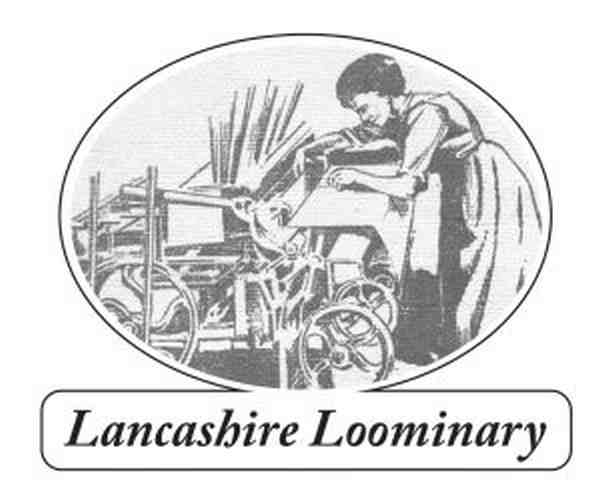
9 replies on “Northern Weekly Salvo 291”
It is very interesting to read about Bolton’s links with Russia and the textile industry. I studied Russian at Bolton School and then briefly lived in Minsk as part of my University degree course, which was still a part of the Soviet Union at that time. I still have fond memories of long journeys by overnight sleeper train, especially the lemon tea!
In your item about Lancastrians in Russia you mention Kiev and Odessa, cities in the Ukraine, as though they were actually in Russia. Although at the time areas of the Ukraine were part of the Russian Empire, the area and its population were still regarded as Ukrainian. Despite Ukraine having its own 1917 Revolution the Soviets soon brought it under their control and there it remained, forcibly assimilated as part of the USSR, until the early 1990s.
The history of Ukraine is a little bit more complex than your potted history allows. Not least that the Soviets ‘soon’ brought it under their control. This glosses over the resistance of Makhno and the Ukrainian anarchists – who also had no truck with Ukrainian nationalists who, after the Soviet takeover, morphed into the a fascist organisation that collaborated with the Nazis and even exceeded them in barbaric pogroms of Jews and Poles. Whether Crimea, whose population was mainly Muslim Tartars, was ever historically part of Ukraine is also debatable. At anyrate, Kiev and Odessa were part of Russia in the 19th century, so Paul is quite right. Then the Ukrainians were known as Ruthenians and there was little Ukrainian identity, the country being populated by Ruthenians, Poles, Russians, Jews, Germans and other ethnic groups.
The item relating to the links with Russia reminded me of a tax issue that I advised on in the 1980s. A family involved in the manufacture of camel hair belts, used to drive textile machinery, had their factories , warehouses and assets in Russia confiscated in 1917. In reply the British government froze Russian govt bank accounts in London The Foreign Compensation Commission settled the matter in the 1980s by paying out sums from the frozen bank accounts to those families who had had their assets seized in 1917. The family and the firm producing the belts were both I believe originally from Lancashire
These days I find the time to read and even comment like now.
I was interested in your views on Devo!ution and e!ectoral reform. I wasn’t a big fan of devolution to Scotland and Wales but I suppose it couldn’t be put off any longer. I’m even less of a fan of devolution to the English regions ànd I remember Prescott’s proposals for the North East was heavily rejected by the voters. I just think that the more layers of government you have the harder it is to govern, especially when the levels are controlled by different political parties. I have however come round to the view that we must have electoral reform, preferably the German system of AMS. Our system of SMSM was ok when we had a strict 2 party system, say from 1945 to 1974, but even then we had various anomalies such as 1951 when Labour lost despite getting more popular votes. To achieve this we would have to bite the bullet and have an electoral pact with the Liberals, not standing against their MPs or where they are a good second. This would not necessarily mean coalition – after all there were Con-Lib pacts in both Bolton and Huddersfield up to 1964.
An interesting development in this piece. It happens to be a Conservative but it illustrates a risk with the Scottish form of PR It is very good at delivering a parliament that reflects the votes cast across the nation, unlike first past the post, but leaves a risk the seats can be “bought”, which I thought was abolished in 1832.
https://www.dailyrecord.co.uk/news/politics/scots-tories-cronyism-row-big-23466994
About Haigh Foundry and its locomotives – C. E. Stretton’s list is not “slightly unreliable”. It is fiction from end to end. Please see my article in ‘Railway Archive’ of March 2008, which can be accessed on the LNWR History Group site: LNWRHG.com – under ‘Articles’.
It is difficult to believe that anyone would spend so much time and effort to publish lies about railway history, with faked trivia about old long-gone or imaginary engines, but that’s exactly what Stretton did.
He died in 1915, but in his dozens of published booklets, articles and letters to newspapers all over England, his deceitful and misleading work lives on.
‘Rochdelskaya Ulitsa/ Rochdale Street’ in Moscow celebrates the fact that the town of Rochdale formed one of the earliest co-operative societies, and the one which became the model for later cooperatives.
[…] It’s here: http://lancashireloominary.co.uk/index.html/northern-weekly-salvo-291 […]